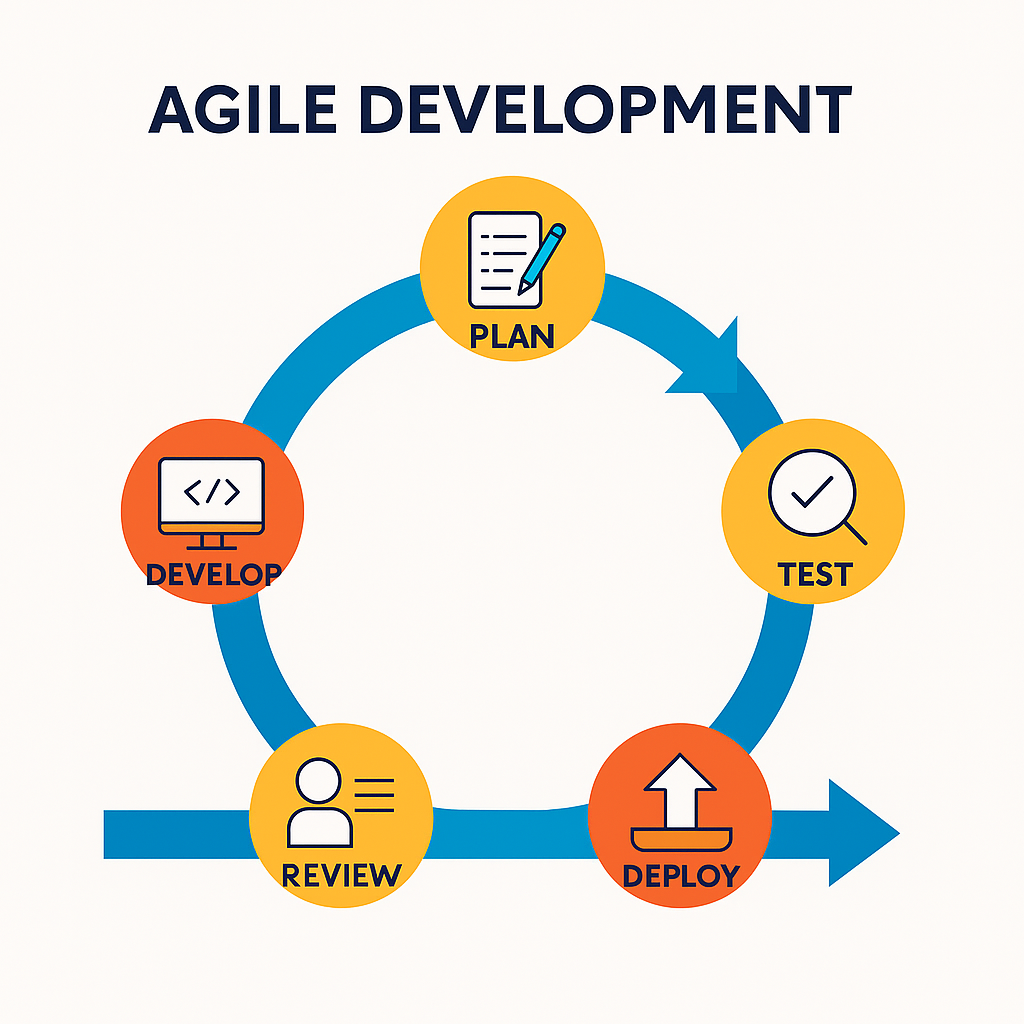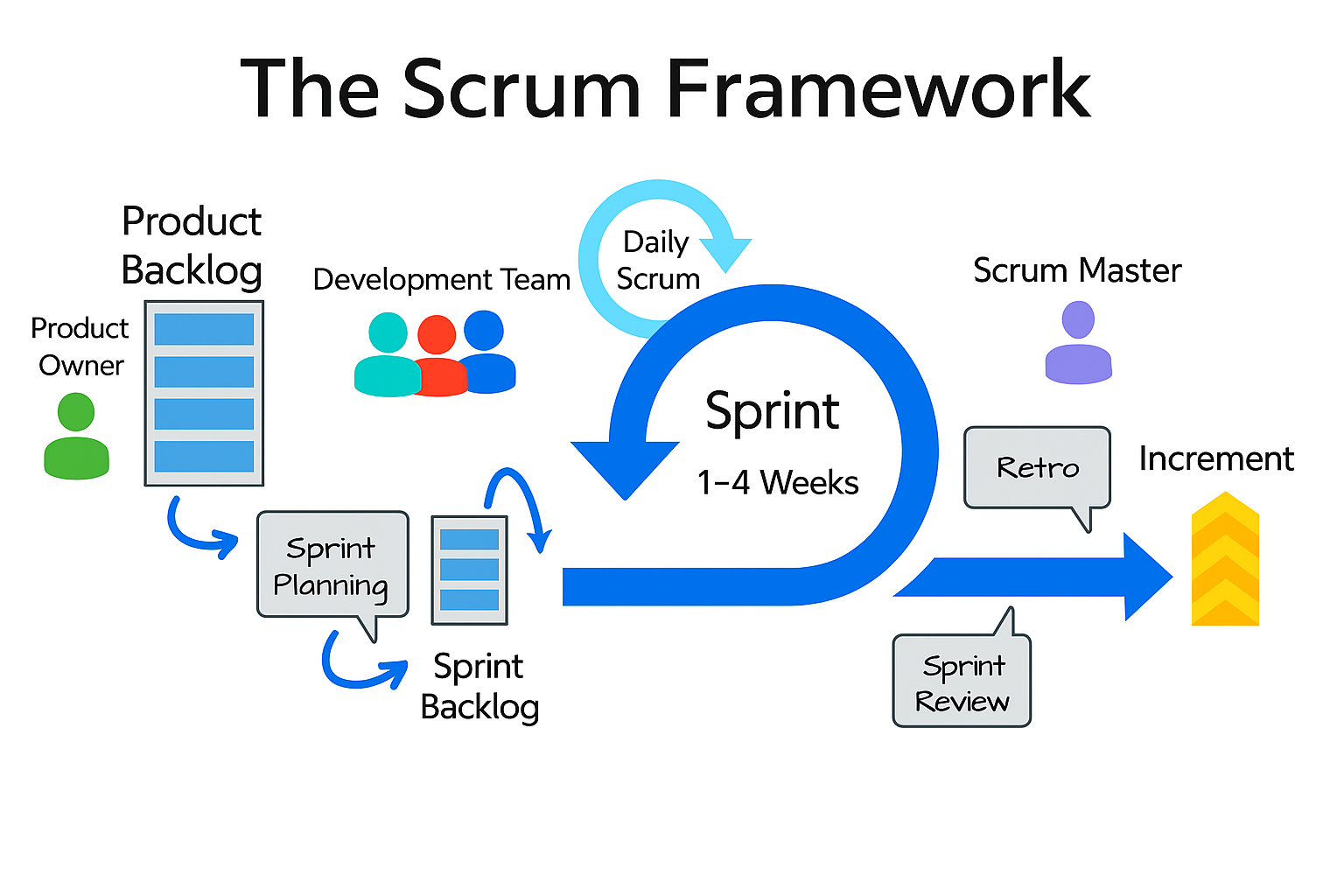Introduction to Agile & Scrum
Agile and Scrum methodologies are widely used in software development to enhance collaboration, adaptability, and efficiency. Azure Boards in Azure DevOps provides tools to implement Agile and Scrum seamlessly.
What is Agile?
Agile is a **flexible, iterative approach** to software development that focuses on continuous improvement, customer feedback, and rapid releases.
- Encourages **frequent collaboration** between teams and stakeholders.
- Allows **adaptability** to changing requirements.
- Uses **small, incremental updates** to deliver value faster.
- Minimizes risks by incorporating **frequent testing and feedback loops**.
- Promotes **self-organizing teams** that take ownership of their tasks.

Agile methodology emphasizes flexibility and iterative progress.
Core Principles of Agile
- Individuals and interactions over processes and tools.
- Working software over comprehensive documentation.
- Customer collaboration over contract negotiation.
- Responding to change over following a fixed plan.
- Iterative progress with frequent reassessments and refinements.
What is Scrum?
Scrum is a **framework within Agile** that organizes work into time-boxed iterations called **Sprints**.
- Uses **daily stand-up meetings** for team updates.
- Organizes work using **Product Backlogs and Sprint Backlogs**.
- Facilitates **continuous feedback and retrospectives**.
- Divides work into **manageable increments**, increasing visibility.
- Enables teams to deliver **working software at the end of every Sprint**.
Key Components of Scrum
- Scrum Team: Includes the Product Owner, Scrum Master, and Development Team.
- Sprint: A time-boxed iteration (usually 1-4 weeks) for developing a working product.
- Product Backlog: A list of tasks and features to be developed.
- Sprint Backlog: A prioritized list of tasks for the Sprint.
- Daily Stand-Up: A short meeting to discuss progress and roadblocks.
- Retrospective: A meeting at the end of a Sprint to review what went well and what can be improved.
- Increment: A usable piece of functionality delivered at the end of the Sprint.

The Scrum framework organizes work into Sprints and fosters collaboration.
Scrum in Azure DevOps
Azure DevOps provides built-in tools to implement Scrum effectively:
- Use **Azure Boards** to manage backlogs and sprints.
- Track progress with **Kanban and Task Boards**.
- Define and prioritize work items such as **Epics, Features, and User Stories**.
- Automate work tracking with **Sprint Planning and Burndown Charts**.
- Monitor productivity using **velocity reports and cumulative flow diagrams**.
- Facilitate collaboration through **integrated dashboards and reports**.
Conclusion
Agile and Scrum help teams deliver high-quality software efficiently. Azure DevOps provides robust tools to manage Agile projects, track work, and ensure continuous improvement. By following **Scrum principles** and leveraging **Azure Boards**, teams can improve productivity and respond to changes quickly.
The next step is to explore **Work Items, Epics, Features, and User Stories** in Azure Boards.